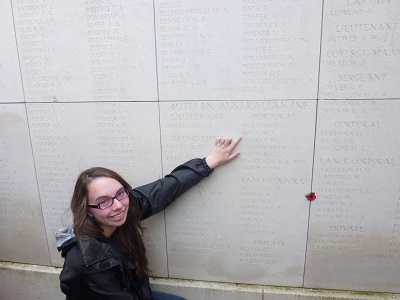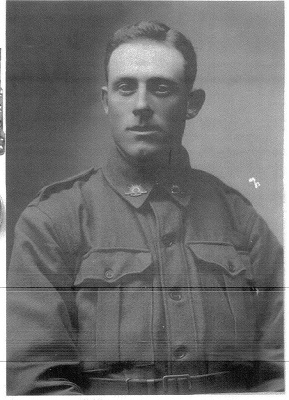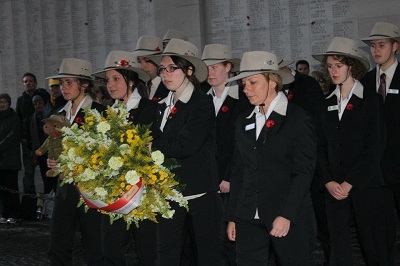
Communities, Sport and Recreation
-
Community Partnerships and Priorities
- Aboriginal Partnerships
- Child and Youth Wellbeing
-
Community Policy and Engagement
- Advisory groups
- Centenary of ANZAC
- Companion Card Program
- Concessions Guide
- Prevention of Family and Sexual Violence
- International Women's Day
- Frank MacDonald Memorial Prize
- Significant Tasmanian women
- Tasmanian Honour Roll of Women
- Women on Tasmanian boards and committees
- Veterans Programs
- Seniors Card
- Tasmanian Carer Action Plan
- Older Tasmanians
- LGBTIQA+ Tasmanians
- Volunteering
- Multicultural Island
- Food Relief to Food Resilience
- People with Disability
- Women
- Community and Disability Services
- Community Grants
- Contact
- Digital Strategy and Services
- Office of Local Government
- Office of Parliamentary Counsel
- Office of Review and Evaluation
- Office of the Secretary
- Resilience and Recovery Tasmania
- Corporate and Government Services
- Policy Division
- Service Tasmania Unit
- State Service Management Office
Contact Details
By phone
Find the number of a specific division or office to contact them directly or call Service Tasmania on 1300 135 513.
Our staff
Use the Tasmanian Government Directory to find staff contact details
Social media
Follow our social media accounts to keep up to date with specific programs and initiatives.
Corporal James Button

Bringing stories to life
Without research the identities of soldiers who served in World War One can become mere inscriptions on memorials dedicated to the thousands of war dead.
More is now known about Corporal James Button thanks to research conducted by one of his relatives, Jacqueline Smedley, a Marist Regional College student from Tasmania who travelled to Europe as a member of the Frank MacDonald Memorial Study Tour in 2012.
About Corporal James Button

- Date of Birth: 6 September, 1885, Longford, Tasmania
- Family: Seventhson of William and Hannah (nee Oakley) Button; Brother to Alfred, William, Charles, Joseph, Ernest John, Norman, Walter, Clarence, Florence, Herbert James, Maud, Grace, Hilda and Cyril
Not Married - Next of Kin: (Father) William Button, Scone Farm, Perth d. 8 June, 1919
(Sister-in-law) Mrs E.M. Button, “BelleVue”, Epping - Occupation: Farm Labourer working on nearby properties
- Physical Appearance: Height and Weight: Unknown; Complexion: Fair; Hair: Light Brown; Eye Colour: Blue
- Religious Denomination: Baptist
Military service
- Service Number: 132
- Date of Enlistment and Age: 7 March, 1916 along with his brothers, Ernest John and Herbert James Button; aged 30 Years. James Button and his brothers all enlisted on the same day with the 40th Battalion, the same unit as Frank MacDonald. James and his brothers, Ernest John and Herbert James embarked on the HMAS Berrima leaving Hobart on 1 July, 1916. Ernest John and Herbert James HHer both returned from the war and worked on farms around the Perth and Longford area.
- Unit: 40th Infantry Battalion
- Date of Embarkation: 1 July, 1916 along with Ernest John and Herbert James Button
- Name of Ship and Port: HMAS Berrima, ex Hobart (A35)
- Service Details for James Button:
- Left Australia on the 1 July, 1916; disembarked England on the 22 August, 1916.
- Proceeded overseas to France on the 22 November, 1916.
- 21 June, 1917 appointed Lance Corporal.
- 8 September, 1917 promoted to Corporal.
Hopeless mission
The Battalion involved in the 3rd Battle of Ypres which entailed fighting the enemy for the village of Passchendaele. The Commander-in-Chief of the British Empire Forces, General Sir Douglas Haig, believed that he could best disintegrate the Germans by having the key objective to capture a strongly held area held by the Germans in southern Belgium, Gheluvlet Plateau, as it provided panoramic views of the terrain around Ypres. The battle of Passchendaele proved vital to this operation, as it would help the Allies push the Germans back east to protect Ypres. However, the battle of Passchendaele proved to be left too late in the year, as the Germans had a chance to regroup and the weather conditions were unspeakable as the mud was horrendous; the soldiers could not move – it was like they were sitting ducks.
One soldier, Sergeant Major P. Kichington wrote home to his family:
“...that it was the worse battle ever experienced. You have no idea of the troops’ suffering summer and winter, rain, mud and cold – it really is a mercy for God to take us and I assure you, I have often asked God to take me from this life.”
Passchendaele was a hopeless mission where countless soldiers were massacred unnecessarily.
On his way to cross to the right of Menin Road, between 5 am and 6 am in the morning of 12 October, 1917, James was shot dead. Private Kelty, a man who knew James from Longford, stated he saw James just a few minutes after he was killed and the next day he saw him lying in the same place. He could not say where he was buried. However, word got back to James’ brother, Ernest John. He sent a letter that:
“my brother was last seen, according to one of my mates, lying in a shell-hole behind our line on the day of October 12th, and was believed to have been wounded. The case was reported to some stretcher bearers who at once went to find him, but they were informed, before reaching the place that he was dead. Nothing more is known or was seen of him. Extensive enquiries on my (Ernest’s) part to find a burial party who may have buried him or to find anyone who may have seen his body have been fruitless. There is a glimmer of hope in the possibility that in the darkness he may have crawled, by mistake, to enemy lines, or he may have been taken prisoner.”
Sadly, it was confirmed, despite Ernest John’s efforts, that Corporal James Button was killed.
Place of Burial/Commemoration: Buried 250 yards south of Waterfields. The site being recorded as 1.20000.28 N.E/F?. D.10.D.60.40. Land would have been retaken and burial lost. As a result, name is now recorded at Ypres (Menin Road) on the Menin Gate Memorial
Visiting the Menin Gate Memorial to the Missing

Corporal James Button’s body was never recovered. His name is inscribed in the Menin Gate Memorial at Ypres, in Belgium along with 54,397 others who are missing in Belgian Flanders.
On 20 April 2012, Jacqueline and members of the Frank MacDonald Memorial Study Tour visited the Menin Gate Memorial to the Missing, in Ypres, Belgium, which Jacqueline recorded as having a very sombre feel:
“Over 50,000 names are present on this humongous but stunning monument; every soldier with no known grave. All they have to represent their life is a name inscribed on a wall, just for people to look at. There is a whole life signified by that name; an innocent, tragically ended life.”
Every night at 8 o’clock, the traffic is stopped at Menin Gate while members of the Ypres Fire Brigade sound the Last Post in the roadway under the arches.
Jacqueline found James Button’s name on the Menin Gate and said she felt very honoured to take part in the wreath laying ceremony in remembrance of all the soldiers who are represented on the wonderful memorial.
Observations:
Frank McDonald, Battalion Number 53, was also a member of the Tasmanian 40th Battalion. He was made a temporary Corporal on the 13 October, 1917; the day after James Button was killed. He was promoted to Corporal 13 January, 1918.
Personal Reflection:
Jacqueline never met the family members she researched for the Frank MacDonald Memorial Prize but having visited the Western Front it was as if she had known them all her life:
I became so overwhelmed when I saw their names inscribed on a simple grave or memorial but that inscription is of huge importance to all their families. They all have a story and it needs to be told. I did not realise that I was actually helping to bring their stories to life and was about to retrace their steps; suddenly you find the researched information is very valuable and means so much.
I have great admiration for Ernest John, as he did everything in his power to ascertain the real facts about his brother. I can only imagine the anguish he must have felt.
James made the ultimate sacrifice; he will never be forgotten. As stated by his family at the time of his death, “you gave your life, your all”. As one soldier wrote “we died in hell, they called it Passchendaele.”
Rest in Peace James
- Jacqueline Smedley
Read Jacqueline Smedley’s research about Corporal James Button’s cousins:
Read about other Frank MacDonald Memorial Study Tour pilgrimages.
